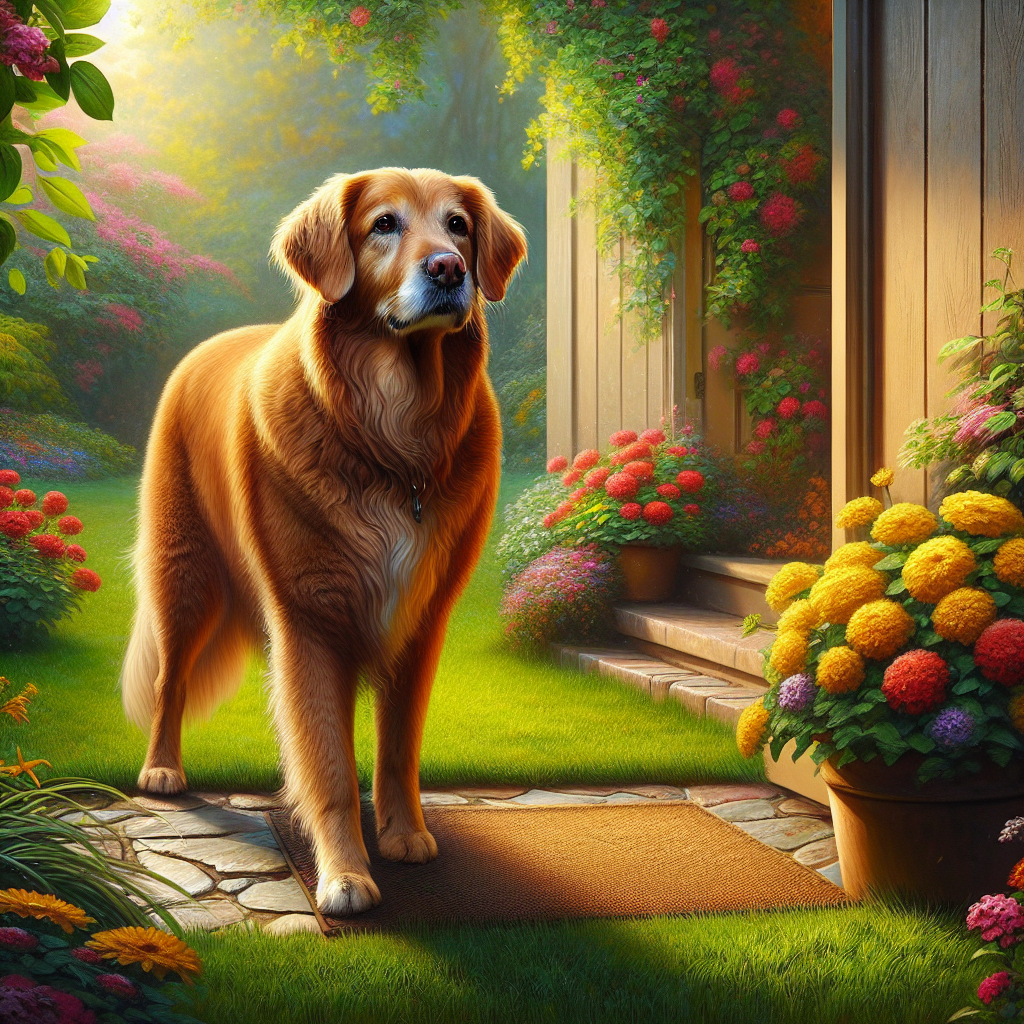How to Train Your Dog to Pee Outside: A Simple Guide
Before embarking on the journey of training your dog to pee outside, it's essential to understand the unique bathroom needs of your furry companion. Just like humans, dogs have their own schedules and preferences when it comes to bathroom breaks. Recognizing and respecting these needs is the first step towards a successful training process.
Dogs generally need to relieve themselves after activities such as eating, drinking, playing, and waking up. Puppies, in particular, have smaller bladders and may require more frequent bathroom breaks compared to adult dogs. As a rule of thumb, a puppy can hold its bladder for about one hour for every month of age. Therefore, a three-month-old puppy may need to go out every three hours.
It's crucial to observe your dog’s behavior to identify signs that they need to go. Common indicators include sniffing around, circling, or heading towards the door. By paying attention to these cues, you can prevent accidents inside and reinforce outdoor bathroom habits.
Additionally, consider your dog's diet and exercise routine, as these factors can influence their bathroom schedule. A consistent feeding schedule will help regulate your dog's digestive system, making it easier to predict when they'll need to go outside.
Understanding these needs not only helps in creating a routine but also strengthens the bond you share with your dog. And remember, positive reinforcement is key. Treat your furry friend to the joy they deserve with our range of delicious and nutritious dog treats by visiting Happypup.dog.
Choosing the Right Training Supplies

When it comes to effectively training your dog to pee outside, having the right supplies can make a significant difference. Investing in quality training supplies not only aids the process but also makes it more enjoyable for both you and your dog.
First, consider purchasing a sturdy, comfortable leash. A leash is essential for guiding your dog to the designated bathroom area and ensuring they stay focused on the task. Opt for a leash that is easy to handle and provides enough control without causing discomfort to your dog.
Next, training pads can be an invaluable tool, especially during the initial stages of training or for those living in apartments. These pads offer a temporary solution for indoor accidents and can help transition your dog to outdoor potty habits. Gradually move the pads closer to the door, and finally, outside to help your dog make the connection.
Don't forget to stock up on a variety of high-quality treats. Treats serve as a positive reinforcement tool, rewarding your dog for successfully going outside. Choose healthy treats that your dog loves, ensuring they are both tasty and nutritious.
Additionally, a clicker can be an effective training aid. Clicker training involves using a small device that makes a clicking sound to mark desirable behavior. This tool helps your dog associate the sound with a reward, reinforcing the desired action.
By equipping yourself with the right training supplies, you set the stage for a smoother training experience, paving the way for a well-behaved and happy pup.
Establishing a Consistent Routine

One of the key components when learning how to train your dog to pee outside is establishing a consistent routine. Dogs thrive on routine and structure, which helps them understand what is expected of them.
Start by setting specific times for your dog's bathroom breaks. Puppies, in particular, have small bladders and need to go outside more frequently. Consider taking them out first thing in the morning, after meals, after naps, and before bedtime. This creates a predictable schedule that your dog can rely on.
Choose a specific spot in your yard or nearby location for your dog to use as their bathroom area. Consistency in location helps your dog associate that specific place with potty time. Over time, your dog will understand that this is their designated spot to relieve themselves.
Use a consistent command, such as "go potty," every time you take your dog outside. This verbal cue will help your dog associate the action with the command. Be sure to use the same phrase consistently to avoid confusion.
Patience and persistence are crucial. It might take some time for your dog to fully grasp the concept, but with a consistent routine, they will eventually get the hang of it. If accidents occur inside, clean them up without drawing too much attention to the mishap to avoid creating anxiety for your dog.
By sticking to a routine and using consistent cues, you build a foundation of trust and understanding, making the training process smoother and more successful.
Using Positive Reinforcement Techniques
When learning how to train your dog to pee outside, utilizing positive reinforcement techniques can make a significant difference in the success of the training process. Positive reinforcement involves rewarding your dog for desired behaviors, which in this case, is peeing outside.
Whenever your dog successfully goes to the bathroom outside, immediately offer praise and affection. Use a cheerful voice to express your delight, as dogs are very responsive to vocal tones. This helps them associate their action with positive feedback.
Treats are a powerful motivator for most dogs. When your dog pees outside, give them a small, tasty treat as a reward. It's important to offer the treat immediately after the behavior to create a clear connection between the action and the reward. Over time, your dog will understand that peeing outside leads to positive outcomes.
Remember to vary the types of rewards to keep your dog engaged and motivated. You can use a combination of verbal praise, petting, and treats. Some dogs respond well to playtime as a reward, so consider incorporating a quick game of fetch or tug-of-war after successful bathroom breaks.
Consistency is key in positive reinforcement. Make sure everyone in the household is on the same page and using the same techniques to reward your dog. This reinforces the behavior and helps your dog learn faster.
By focusing on positive reinforcement, you not only encourage the desired behavior of peeing outside but also strengthen the bond between you and your furry friend, making the training process a rewarding experience for both of you.
Handling Accidents with Patience

Training your dog to pee outside inevitably involves some mishaps along the way. Handling these *accidents* with patience is crucial to maintaining a positive training environment. Understand that accidents are a normal part of the learning process, and reacting with frustration or anger can hinder your dog’s progress.
When an accident occurs, it's important to address it calmly. Avoid shouting or punishing your dog, as this can create fear and confusion, potentially leading to more frequent accidents. Instead, interrupt the behavior if you catch your dog in the act by making a loud noise or gently clapping your hands. This should be enough to stop them temporarily, allowing you to redirect them outside.
After redirecting your dog, take them to their designated bathroom area immediately. If they continue their business outside, reward them with praise and a treat to reinforce the correct behavior. This helps them understand where they should go in the future.
Cleaning up accidents promptly and thoroughly is also essential. Use an enzymatic cleaner to remove any odors that might encourage your dog to use the same spot again. Dogs have a keen sense of smell, and lingering scents can signal them to return to the same location.
Patience is key, as some dogs may take longer to adjust to the new routine. Stay consistent with their schedule and reinforcement techniques, and gradually, the frequency of accidents will decrease. Remember, every step in the right direction is progress, and maintaining a calm, understanding approach will ultimately lead to success.
Maintaining Long-Term Success

Once your dog has mastered the art of peeing outside, it’s important to focus on maintaining long-term success. Consistency remains key even after your dog has learned where to do their business. Keep up with regular bathroom breaks, particularly after meals and naps, to reinforce their schedule and habits.
Continue to offer *positive reinforcement* when your dog successfully pees outside. Over time, you can gradually reduce the frequency of treats, but always provide verbal praise to remind them of a job well done. This ongoing encouragement helps solidify their training and prevents any regression in behavior.
It's also beneficial to periodically revisit the basics of training, especially if you notice any signs of backsliding. This could involve returning to a more structured schedule or increasing the frequency of outdoor trips until your dog is back on track.
Environmental changes, like moving to a new home or changes in daily routine, may require some adjustment in your dog’s bathroom habits. Be prepared to offer extra support and patience during these transitions to ensure they continue to succeed.
Remember, maintaining a positive and supportive atmosphere is essential for your dog's confidence and comfort. By remaining patient and consistent, you’ll help your dog enjoy a lifetime of good bathroom habits.
Treat your furry friend to the joy they deserve with our range of delicious and nutritious dog treats. Visit our website at Happypup.dog to explore our selection that supports your dog’s health and happiness.






